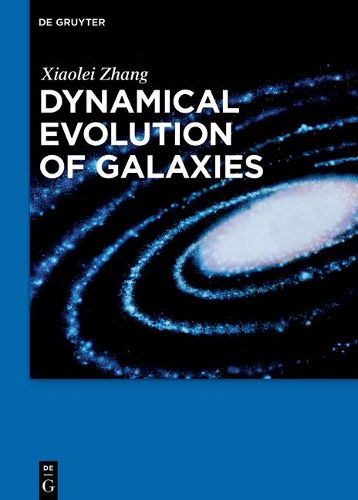Readings Newsletter
Become a Readings Member to make your shopping experience even easier.
Sign in or sign up for free!
You’re not far away from qualifying for FREE standard shipping within Australia
You’ve qualified for FREE standard shipping within Australia
The cart is loading…






This research monograph presents a new dynamical framework for the study of secular morphological evolution of galaxies along the Hubble sequence. Classical approaches based on Boltzmann’s kinetic equation, as well as on its moment-equation descendants the Euler and Navier-Stokes fluid equations, are inadequate for treating the maintenance and long-term evolution of systems containing self-organized structures such as galactic density-wave modes. A global and synthetic approach, incorporating correlated fluctuations of the constituent particles during a nonequilibrium phase transition, is adopted to supplement the continuum treatment. The cutting-edge research combining analytical, N-body simulational, and observational aspects, as well as the fundamental-physics connections it provides, make this work a valuable reference for researchers and graduate students in astronomy, astrophysics, cosmology, many-body physics, complexity theory, and other related fields.
Contents Dynamical Drivers of Galaxy Evolution N-Body Simulations of Galaxy Evolution Astrophysical Implications of the Dynamical Theory Putting It All Together Concluding Remarks Appendix: Relation to Kinetics and Fluid Mechanics
$9.00 standard shipping within Australia
FREE standard shipping within Australia for orders over $100.00
Express & International shipping calculated at checkout
Stock availability can be subject to change without notice. We recommend calling the shop or contacting our online team to check availability of low stock items. Please see our Shopping Online page for more details.
This research monograph presents a new dynamical framework for the study of secular morphological evolution of galaxies along the Hubble sequence. Classical approaches based on Boltzmann’s kinetic equation, as well as on its moment-equation descendants the Euler and Navier-Stokes fluid equations, are inadequate for treating the maintenance and long-term evolution of systems containing self-organized structures such as galactic density-wave modes. A global and synthetic approach, incorporating correlated fluctuations of the constituent particles during a nonequilibrium phase transition, is adopted to supplement the continuum treatment. The cutting-edge research combining analytical, N-body simulational, and observational aspects, as well as the fundamental-physics connections it provides, make this work a valuable reference for researchers and graduate students in astronomy, astrophysics, cosmology, many-body physics, complexity theory, and other related fields.
Contents Dynamical Drivers of Galaxy Evolution N-Body Simulations of Galaxy Evolution Astrophysical Implications of the Dynamical Theory Putting It All Together Concluding Remarks Appendix: Relation to Kinetics and Fluid Mechanics